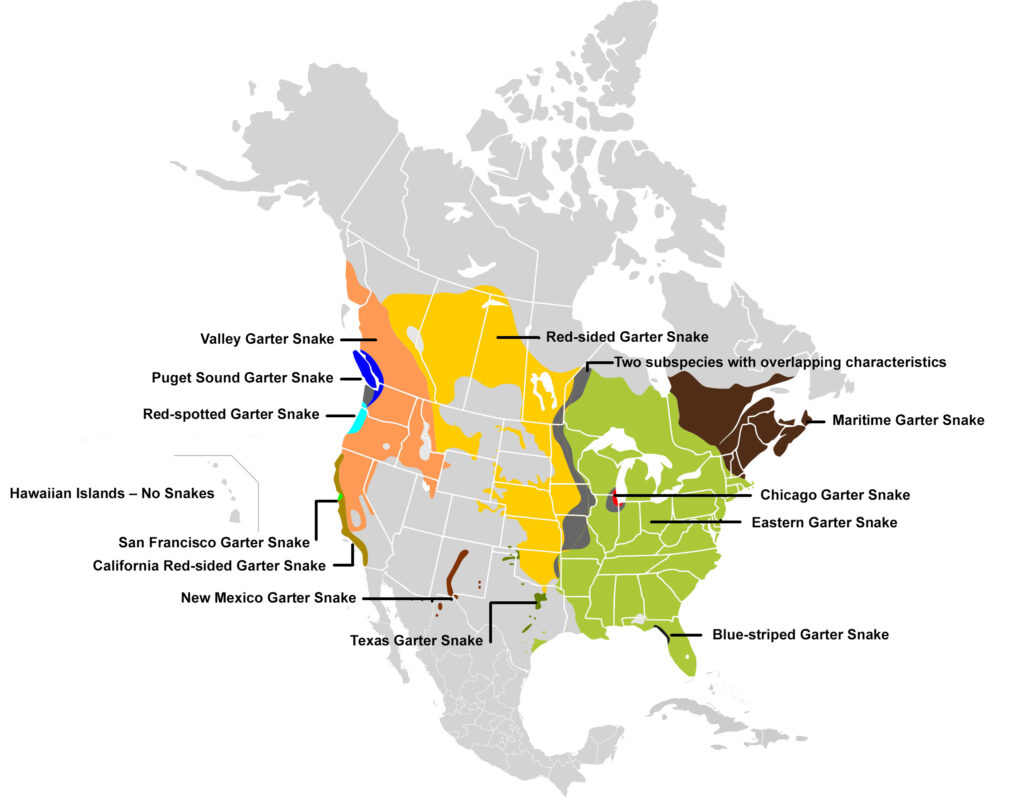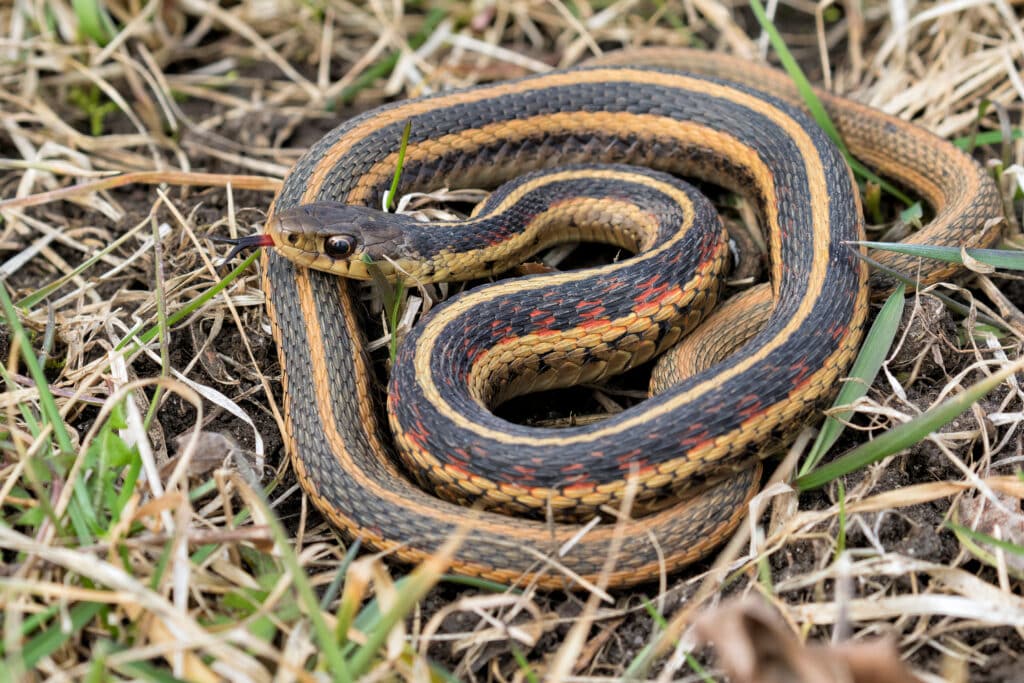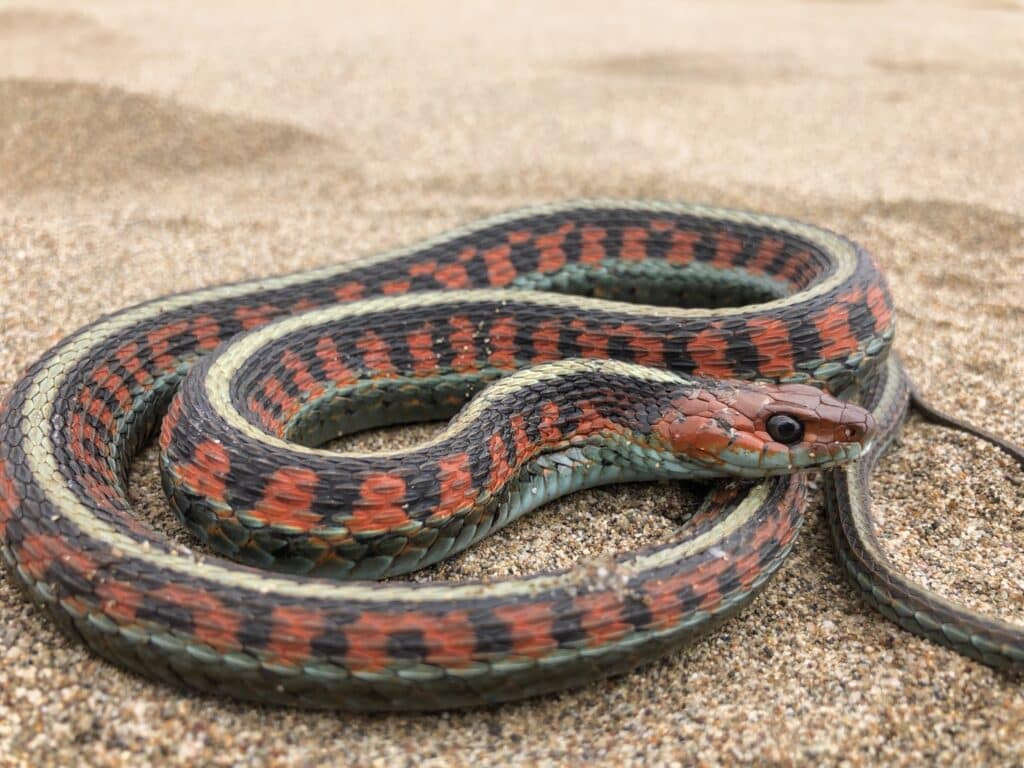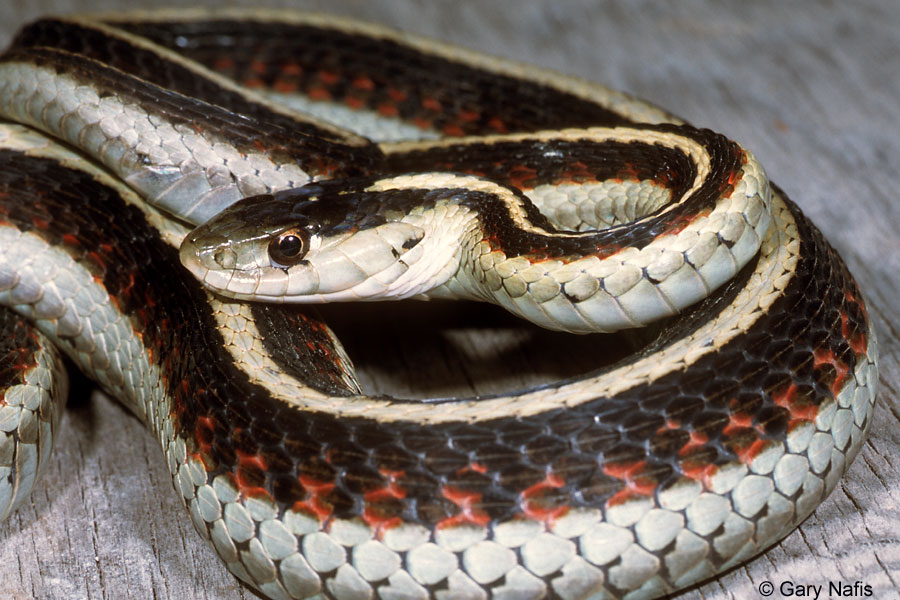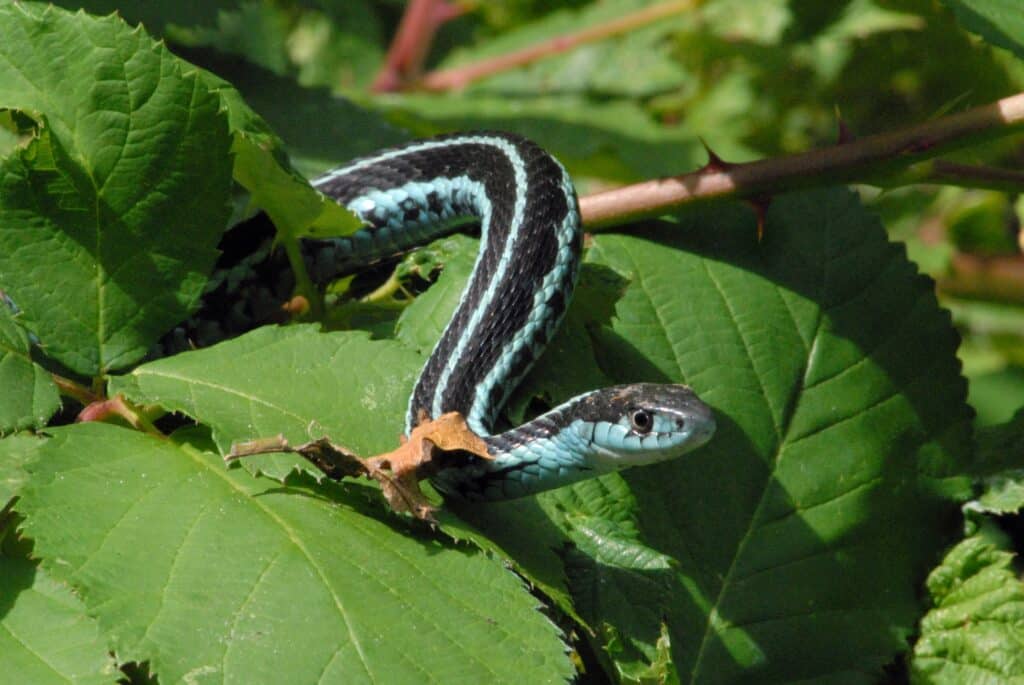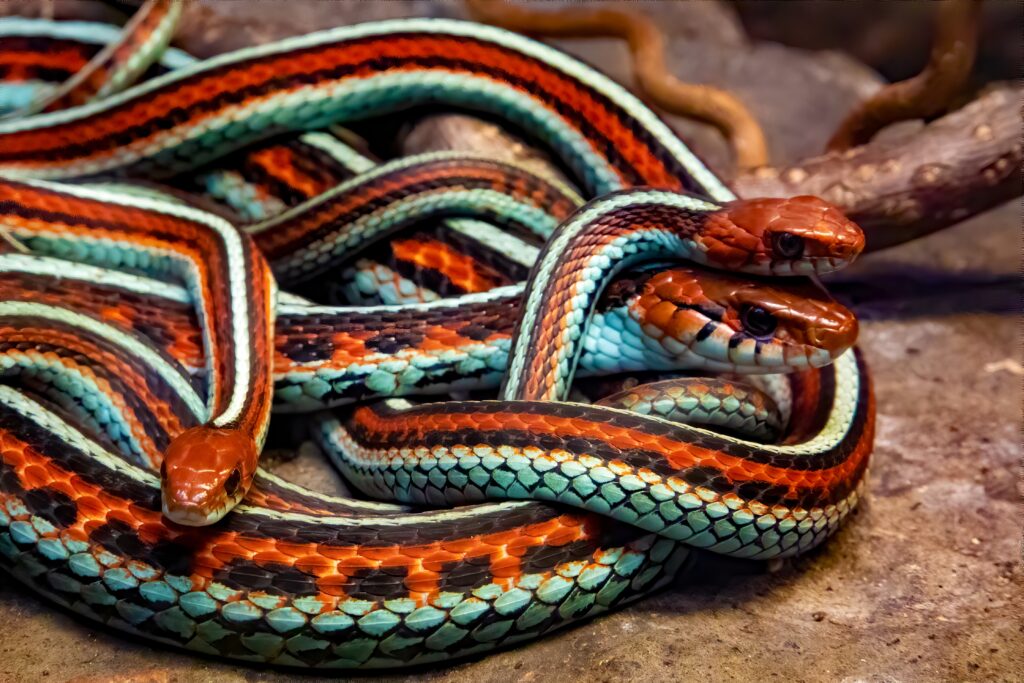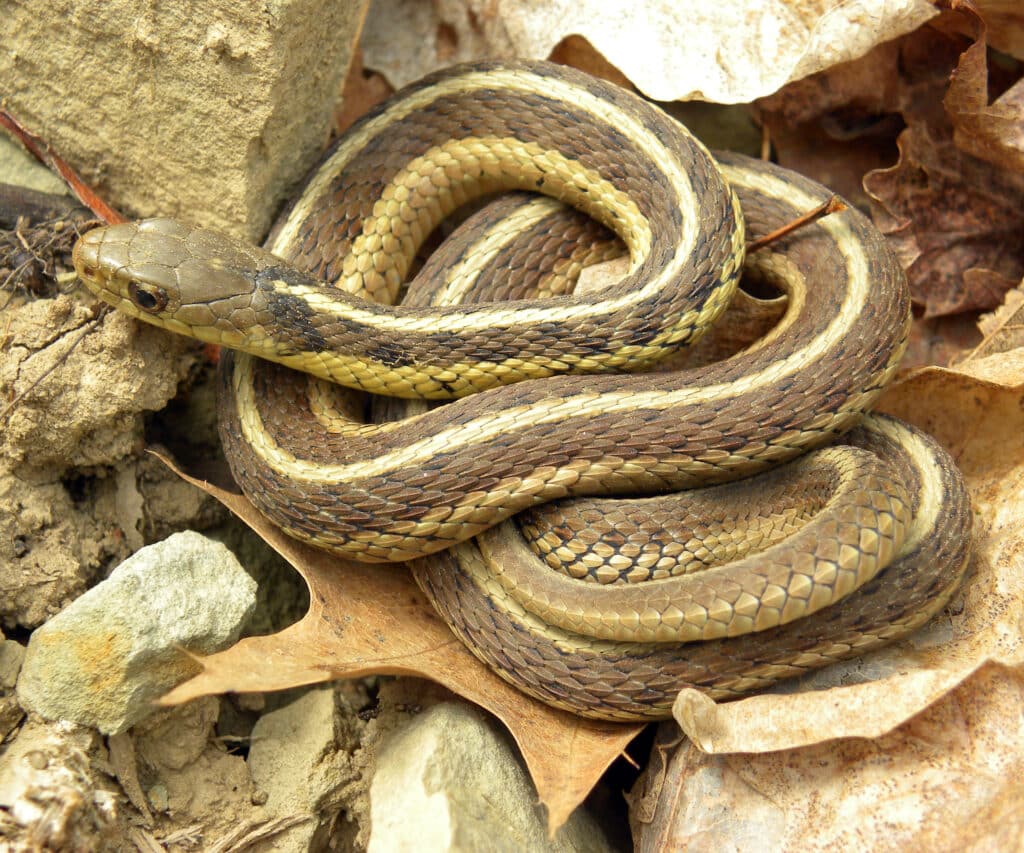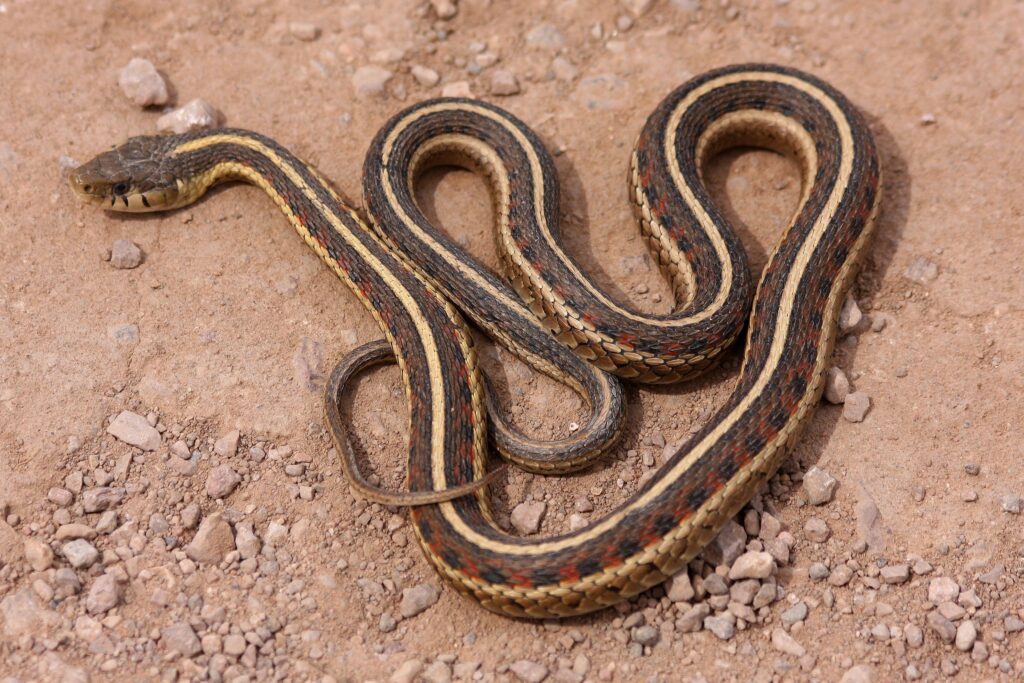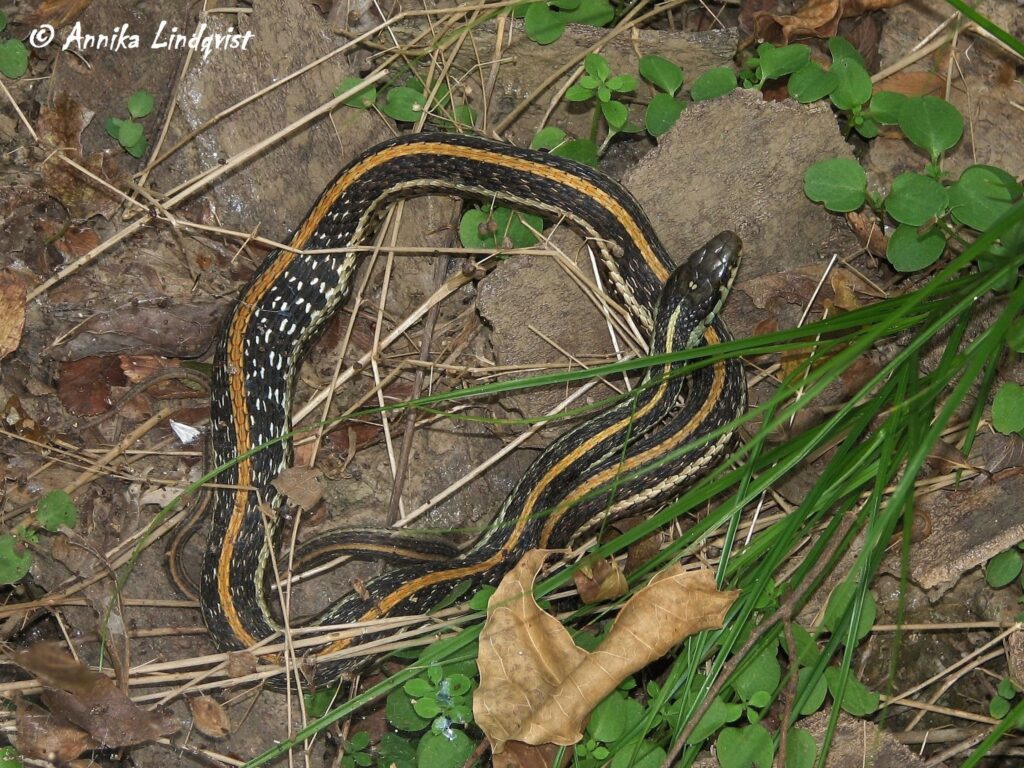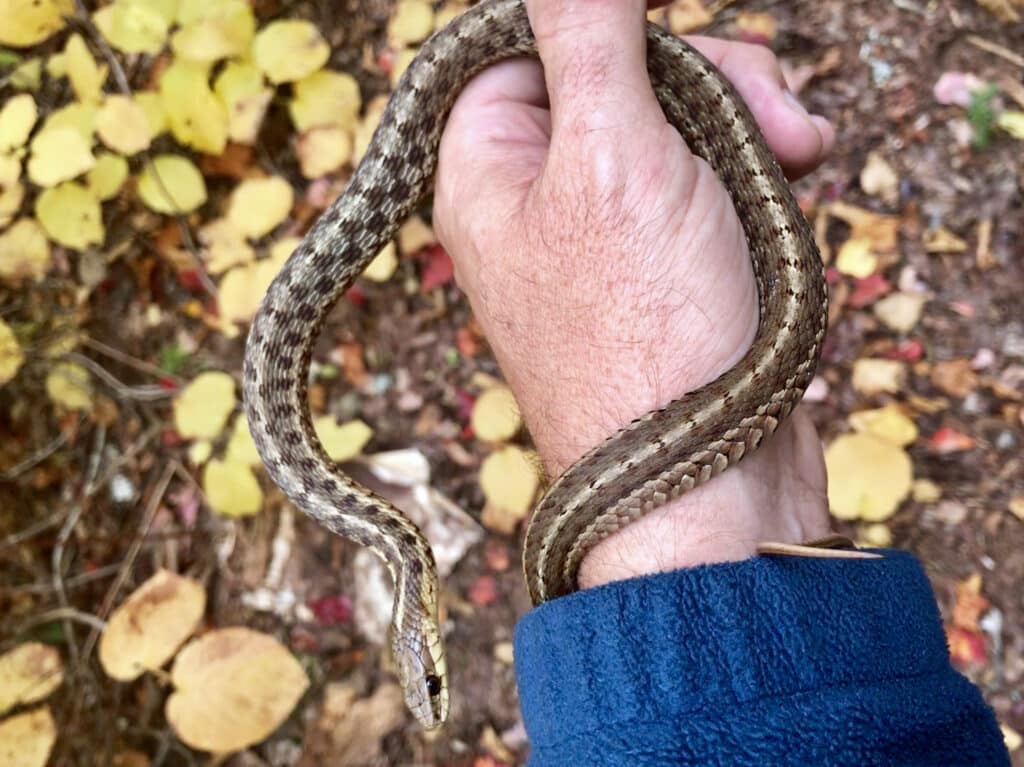Here’s a look at the garter snakes that might inhabit your yard. If you’re like many, if not most, people, you’re wary of snakes, but having them around is a good thing. They’re like the neighborhood cleanup crew, keeping things balanced by feeding on slugs, insects, mice, and small amphibians. Garter snakes are secretive and try to stay out of sight. But if you spot one, give it a nod for being a low-key superhero in your backyard.
Harmless to humans and pets
Garter snakes are not the big bad giants of the snake world. Instead, they’re small to medium-sized and harmless to humans and pets. They’re characterized by slender bodies and distinct coloration, often featuring longitudinal stripes running down their back and patterns in combinations of green, brown, black, and red hues. Their color profiles aid in camouflage and also warn potential predators that their mild toxins (produced by specialized salivary glands) will be harmful to them.
Garter snakes are in the scientific family Colubridae and the genus Thamnophis. They range from Canada’s subarctic regions to Central America’s southernmost parts. There are about thirty-five species and subspecies, with twelve of them in the United States. Garter snakes in warm areas are active year-round, while those in cold regions hibernate in the winter.
Which ones visit your yard?
Here are some of those you might see in your yard, based on where you live. All are subspecies of the Common Garter Snake, Thamnophis sirtalis, and differ primarily in color pattern variation. The defined regions on the following map overlap to some extent.
Red-sided Garter Snake, Thamnophis sirtalis parietalis
The Red-sided Garter Snake boasts a striking appearance with its vibrant orange-red stripes running down its black or brown body. These snakes are relatively small, ranging from 18 to 42 inches (46 cm–1.1m) long, with a slender build. One distinctive feature is the red or orange stripes on their sides, giving them their name. These snakes engage in a fascinating mating ritual known as the “mating ball,” where multiple males compete for the attention of a single female. After mating, the females give birth to live young instead of laying eggs. They live up to ten years in the wild.
California Red-sided Garter Snake, Thamnophis sirtalis infernalis
The California Garter Snake is associated with wet or marshy areas, so if you live near water, this may be the one you’ll see. It has a basic pattern of yellow or blue stripes over a primarily red body. A row of black spots or blotches appear in a stripe-like pattern. Their average total length is about 22 inches (55 cm), but they can get up to a maximum total length of about 39 inches (2.5 m). They mate in the late winter to early spring, and the female gives birth to live young in mid-summer to early fall. They’re found throughout California.
Valley Garter Snake, Thamnophis sirtalis fitchi
The Valley Garter Snake has a wide, yellowish stripe on top and a yellowish stripe along the bottom of each side. Red spots run above the side stripes. They grow 18 to 55 inches (0.5–1.4 m) long but average under 36 inches (0.9 m). They range from northern California to southern Alaska and western Canada in habitats that include forests, mixed woodlands, grasslands, scrub, and farmlands, often near ponds, marshes, or streams.
Puget Sound Garter Snake, Thamnophis sirtalis pickeringii
The Puget Sound Garter Snake is black with a turquoise or black belly and bright yellow or turquoise stripes on the top and sides. It may also have very faint red bars on the sides. Found on Vancouver Island, its adjacent surrounds, and in northwestern Washington in wetlands, marshes, grassy and rocky areas, forests, streams, ponds, lakes, and urban landscapes. Skilled swimmers, they’re well-adapted to semi-aquatic environments. They feed on amphibians, fish, insects, small mammals, and sometimes earthworms and other invertebrates. Females are about 31.5 to 39 inches (80–100 cm) long, with males a few inches shorter.
San Francisco Garter Snake, Thamnophis sirtalis tetrataenia
The San Francisco Garter Snake is visually striking, boasting a vivid combination of red, black, and turquoise stripes along its body. Adult females can reach a length of 47 inches (1.2 m), although the average is 39 inches (0.9 m). They occur in two counties in the densely populated San Francisco Peninsula, with some overlap into adjacent areas. It’s found in various aquatic and riparian habitats, including ponds, marshes, and grassy meadows, and preys on amphibians and small fish.
Eastern Garter Snake, Thamnophis sirtalis sirtalis
Eastern Garter Snakes live in a variety of habitats, including city parks and urban and suburban yards and gardens. Adults are between 18 and 26 inches (46–66 cm) long. You might spot one basking in the sun on piles of logs, stones, and other debris that allow them to quickly hide from predators. In many areas, they overlap with the Plains Garter Snake, Thamnophis radix, which can be found from Canada down through the central U.S. to Texas and beyond.
New Mexico Garter Snake, Thamnophis sirtalis dorsalis
New Mexico Garter Snakes can vary in appearance, but they typically display a series of yellow or greenish-yellow stripes running along their body, often bordered by black or dark brown stripes. Adults are 18 to 42 inches (46–107 cm) long. They inhabit various aquatic and riparian habitats, including streams, rivers, ponds, and marshes, where they can be found foraging for prey such as fish, amphibians, insects, and small mammals. Found in New Mexico, Arizona, and northern Mexico.
Texas Garter Snake, Thamnophis sirtalis annectens
The Texas Garter Snake is found predominantly in central Texas, with populations in southwestern Kansas and western Oklahoma. They have a greenish-black back with a bright orange or red stripe down the center and yellowish stripes on the sides. Adults are from 15 to 28 inches (38–71 cm) in length. If handled, they will flail around and may release a foul-smelling odor. They’re usually seen close to water. They feed on amphibians, earthworms, fish, small birds, and rodents.
Maritime Garter Snake, Thamnophis sirtalis pallidulus
Maritime Garter Snakes are highly variable in color and pattern but tend to be brown, dark green, or black with three longitudinal yellow stripes. Many have white, brown, or black checkered or speckled patterning. They’re typically 18 to 36 inches (46–91 cm) long. Inhabitants of the northeastern U.S. and southeastern Canada are the most common snakes in their areas, including forests, wetlands, shrublands, shorelines, fields, rocky areas, and urban landscapes. Their diet includes small fish, earthworms, salamanders, toads, tadpoles, frogs, and small rodents.
Blue-striped Garter Snake, Thamnophis sirtalis similis
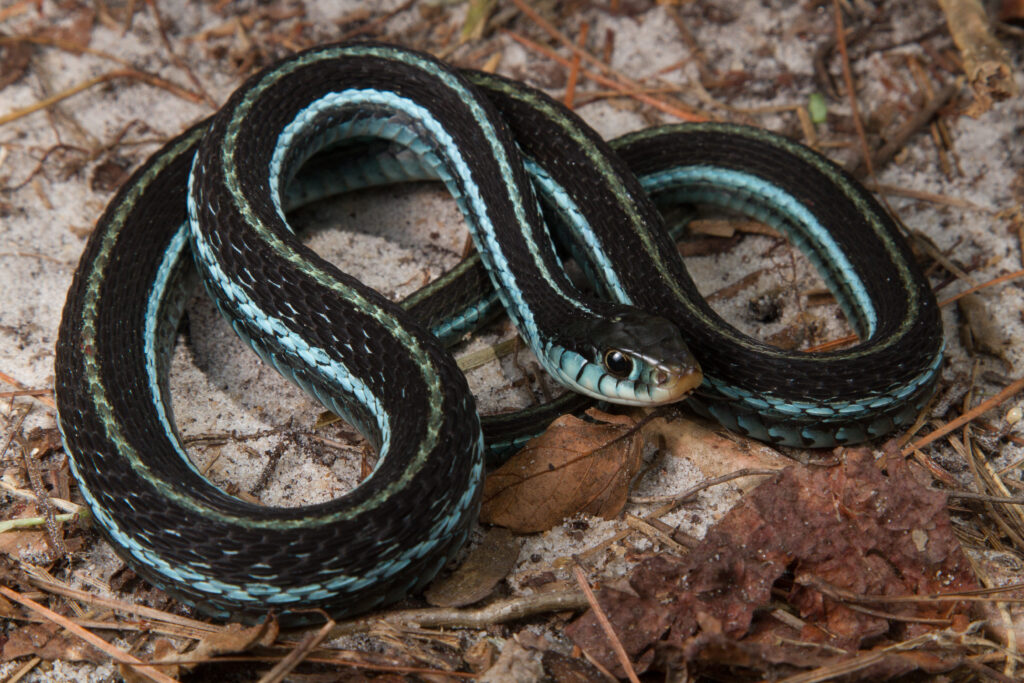
Blue-striped Garter Snake, Thamnophis sirtalis similis (Hill, FWC Fish and Wildlife Research Institute / Flickr; CC BY-NC-SA 2.0)
The Blue-striped Garter Snake is black or very dark brown with three stripes—a yellowish one on top and a pale to bright blue one on each side. Their adult length is about 20 to 23 inches (50–60 cm). They inhabit various wetlands, including freshwater marshes, seasonal ponds, and wet meadows in a small area along the coast of northwestern Florida.
List of all garter snake species
All about snakes
How to keep yard safe from venomous snakes
For this snake, ‘rough’ takes on a new meaning
More interesting facts about snakes
In your yard: lizards



